The beginning of 2023 painted a bleak picture for former Real Madrid star Isco Alarcón, with his footballing future in turmoil. After public disagreements with Sevilla higher-ups, he was left without a club, with his contract being terminated only six months into his tenure in Seville. Despite many attempts from foreign clubs to lure him away from Spain, Isco was set on finding his feet in LaLiga once again.
At the start of this 23/24 season, Isco was handed a lifeline from former boss Manuel Pellegrini, with a short-term deal at Real Betis on the cards. Having developed great rapport when collaborating at Malaga in the early 2010s, the Chilean manager was hoping to rejuvenate the Spaniard and find his ‘golden boy’ form from previous years.
Isco has yet to look back since joining the green half of Seville, standing out as a clear creative threat and leading Betis to a strong campaign in a push for achieving a second successive season of European football. This scout report and tactical analysis will begin to address how Isco has settled so well into this Betis side, highlighting his terrific underlying numbers and why he is beginning to establish a hero-like status under Pellegrini’s tactics. On the back of a long-term contract extension, we will begin to craft an analysis as to why this new version of Isco is making so much noise.
Isco’s role at Betis
With former Manchester City and West Ham manager Manuel Pellegrini at the helm, Real Betis have established themselves as an exciting attacking outfit over the previous seasons. After the loss of personnel in the summer, Isco stood out as a perfect replacement in the No. 10 role, with the technical prowess to keep the good times rolling.
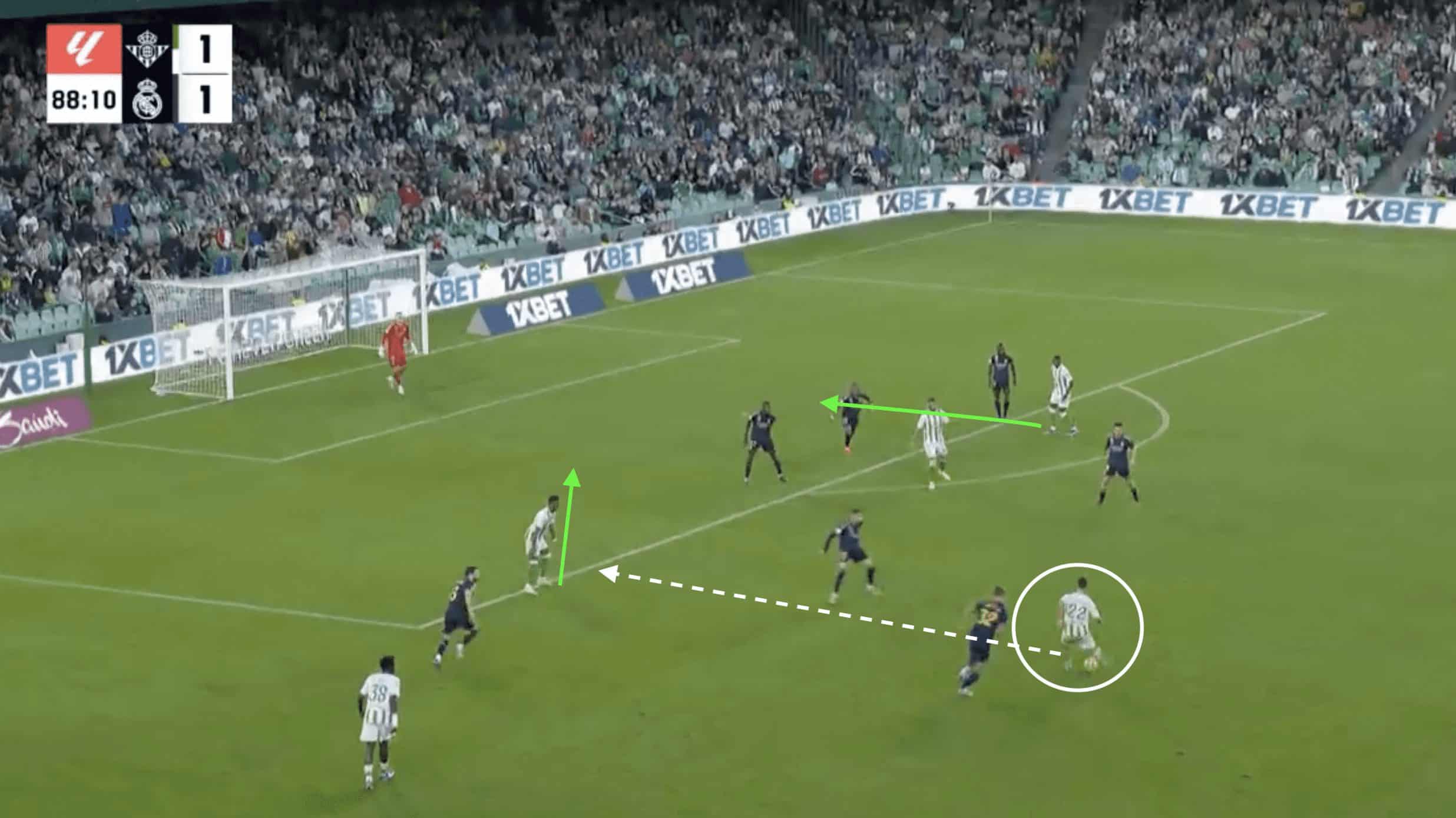
Having established their 4-2-3-1 formation, Real Betis place a large emphasis on their attacking desire, with the consistent double pivot aiming to provide adequate cover should they lose possession. The height of the full-backs up the pitch would suggest that there is a clear desire to be involved in the build-up play. The likes of Abner Vinícius and Ruibal can be shown to play in line with the double-pivot, situated within the opponent’s half to provide an outlet ball and the opportunity to relieve pressure in the midfield. The signing of Isco has represented much more than a temporary replacement for long-time star Nabil Fekir. With similar profiles, Isco has cemented his spot in the starting line-up through his excellent offensive output and experienced leadership.
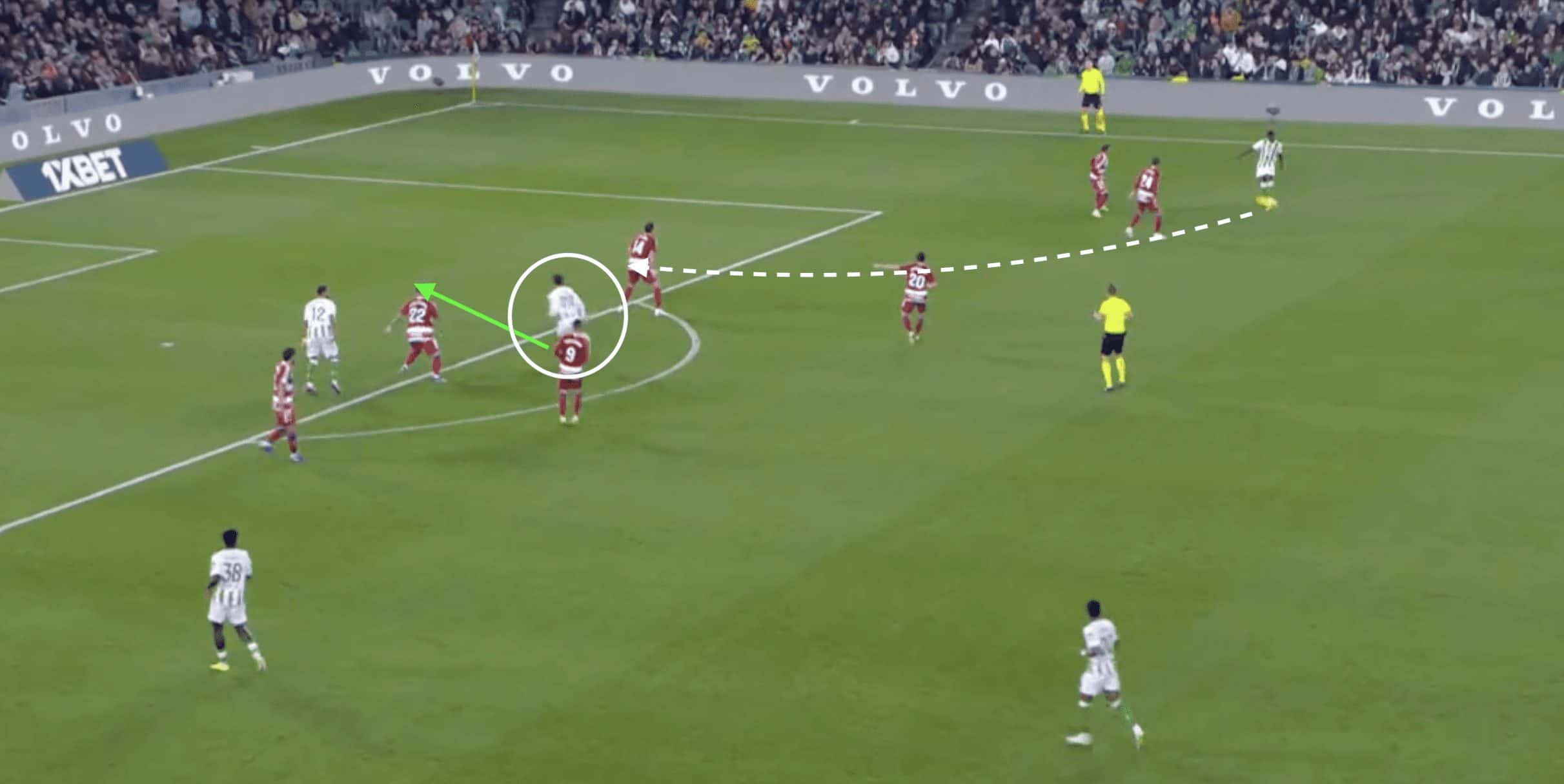
An essential element of Manuel Pellegrini’s philosophy would include the variety and flexibility of their players in attack, creating confusion and mismatches for opposing defenders. This flexibility coupled with their narrow attacking setup at times, has allowed for the interchanging of positions and created opportunities for Isco to have complete freedom in the middle of the park. Subsequently, we can often see Isco drifting out to the flanks to both receive the ball and utilise his dangerous crossing abilities. Whilst many would expect Isco to maintain position between the lines, on the contrary, he is tasked with performing in all of the available attacking roles- even playing as a shadow striker, with penetrating runs beyond the likes of Willian José.
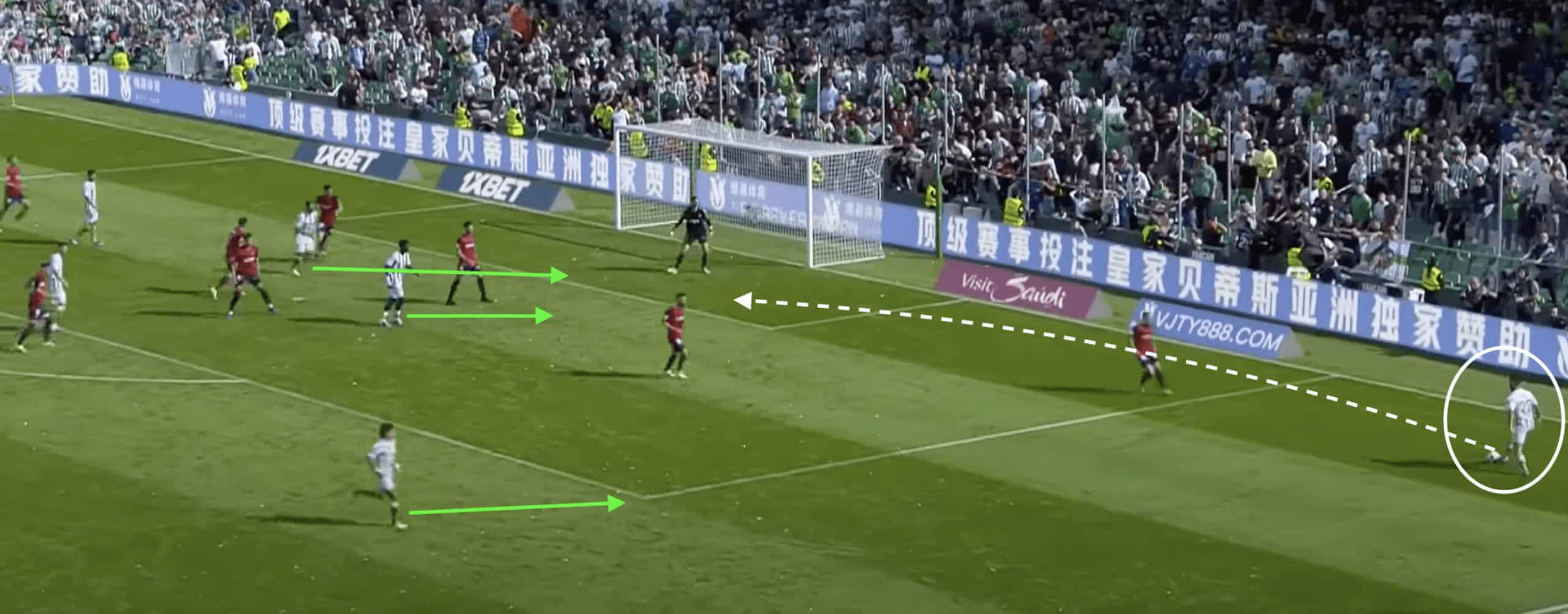
Another aspect that the Chilean manager looks to instil within his players is the fact that there is no use having possession just for the sake of it. Betis look to instigate counter-attacking moves at the earliest opportunity with the committal of players higher up the pitch, despite their vulnerability in transition. With the fifth-highest direct speed of attack in the league (1.98m/s), we can often observe Betis employ progressive-minded play to move the ball higher up the pitch as quickly and accurately as possible. This attacking build-up also benefits from being unpredictable in nature, with equal preference for both direct attacks and build-up attacks once the ball is at the feet of the necessary playmakers.
An underlying monster
When observing the attacking success of Real Betis this season, one could suggest that they may be slightly underachieving. Having only scored 22 league goals thus far, this is quite dismal when comparing it to their expected goals tally of 29.93xG. With minimal numbers to show for their attacking efforts, you would be correct to question their creative ability and personnel- whereas this couldn’t be further from the truth.
Isco’s resurgence in Spain is not unwarranted, and as it stands, he represents one of the most significant underlying facilitators in the league. 8.23 progressive passes and 3.52 key passes per 90 are the highest figures amongst any attacking midfielder in LaLiga, indicative of his ability to dominate possession and remain an X-factor with 71.49 ball touches per 90 (96th percentile). His positioning lends itself well to being an attacking threat, covering huge amounts of space to display his elegance with the ball. A figure of 53.26 passes received per 90 and 46.68 ball carries per match would suggest that he remains the first port of call to link between the attack and midfield.
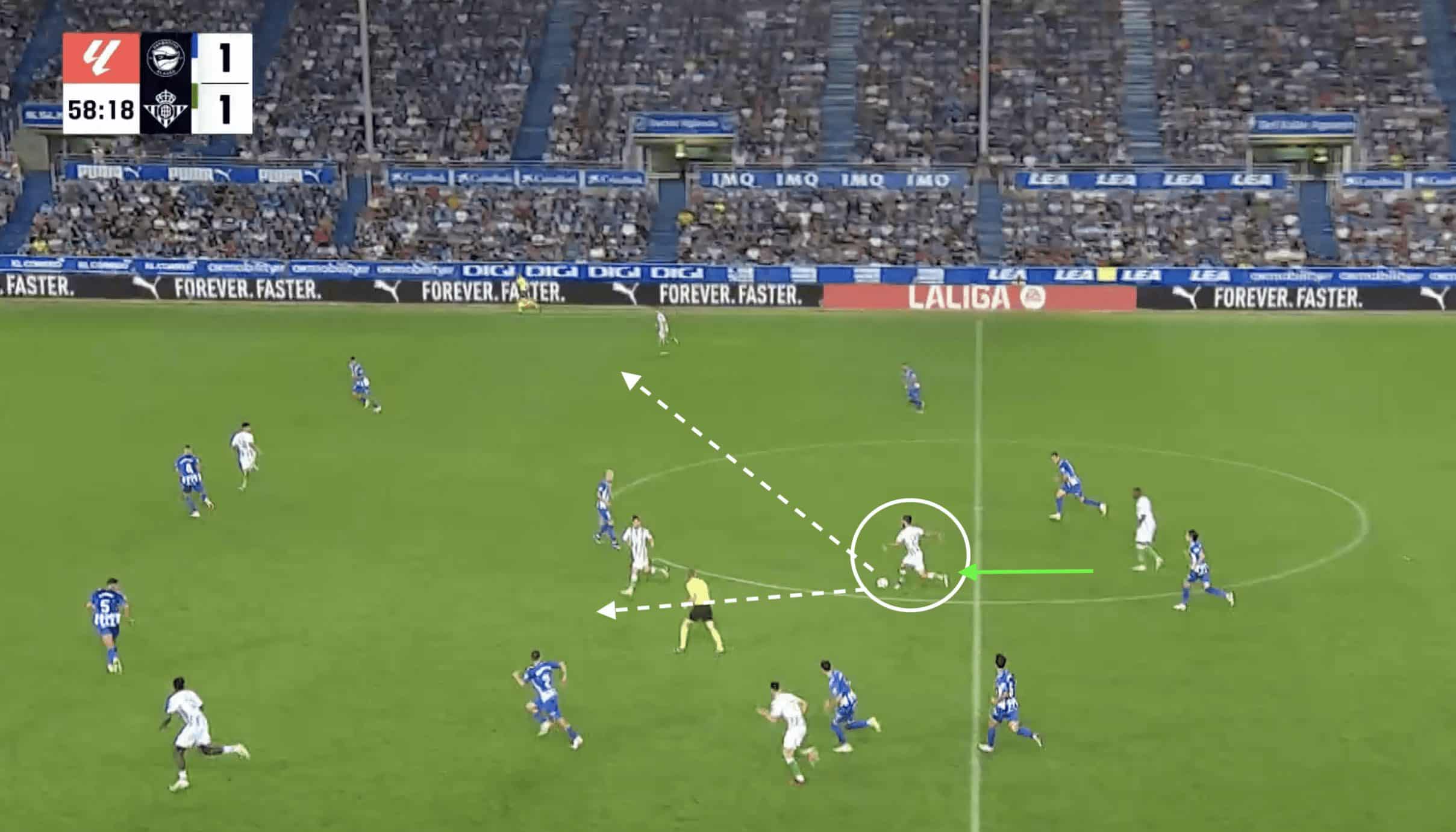
His technical prowess extends into the final third of the pitch, having both scored and created crucial goals to push Betis on their journey to another top 6 finish. Isco’s 6.08 shot-creating actions paint a vivid picture of his current state, displaying tendencies and passing accuracy not too dissimilar to the Isco Real Madrid fans grew to love last decade. For all of Isco’s innovative play in the final third, having only directly contributed to 6 goals this campaign, a lot could be theorised regarding the clinical nature of both him and his teammates. The disparity between his 0.68 xGI (expected goal involvement) and actual figures would imply that Betis will have to be far less wasteful in front of goal should they achieve the league success they truly desire.
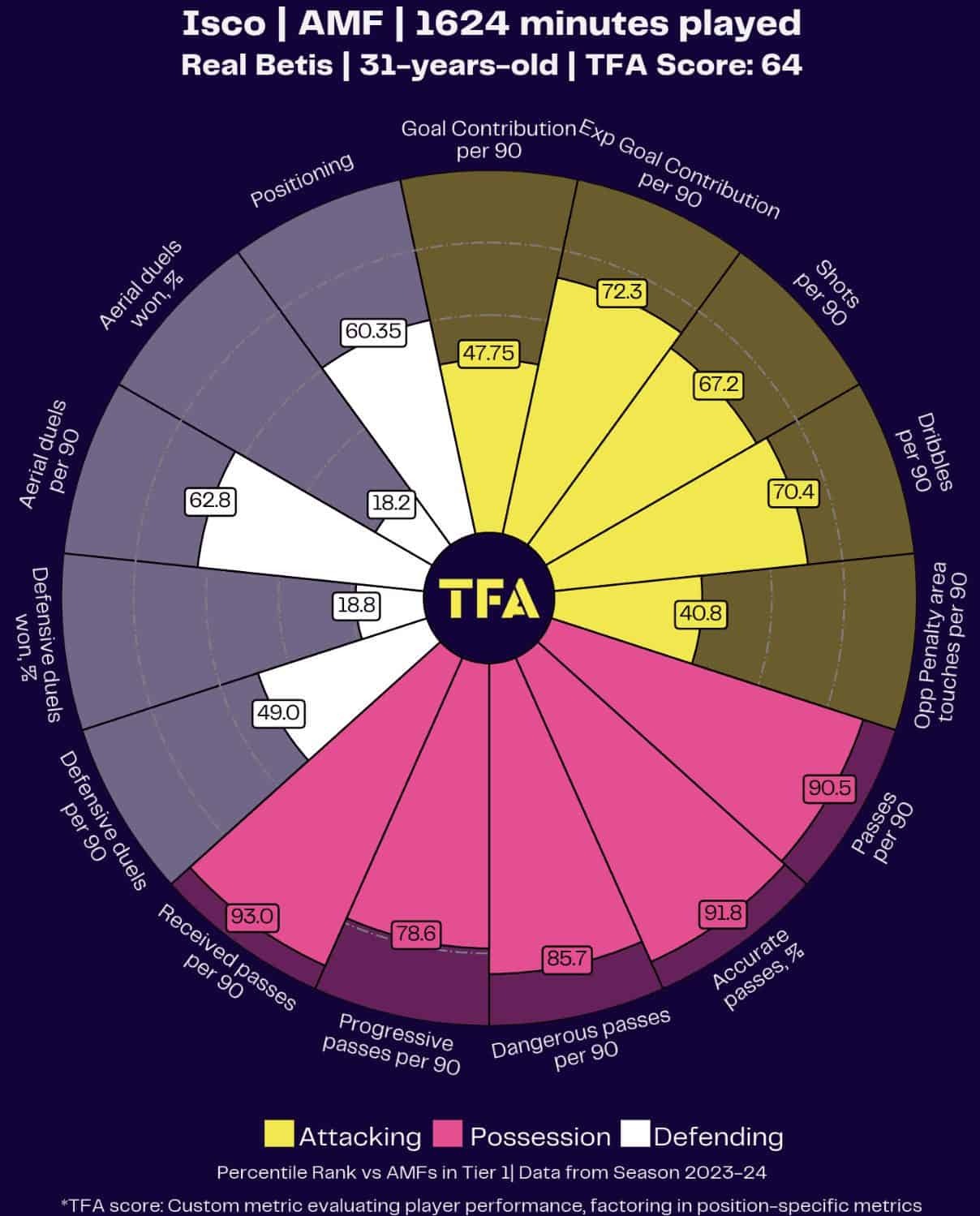
Betis’ defensive setup
Whilst his technical elegance and expertise in the attacking phase has been on full display for Betis, it is also essential to pay tribute to Isco’s work of the ball. Although many would have expected his physicality to wane as he approaches 32 years of age, Isco has adapted well to Pellegrini’s key requirements both in the defensive phase and in transition.
When the opposition looks to build out from the back, Betis have been shown to press their opponents in the 4-4-2 formation, with Isco advancing to accompany the traditional number 9 and press in the initial phase. As he vacates the area between the lines, this then allows a member of the double pivot to progress forward, applying more pressure and aiming to halt progress. Although their press wouldn’t appear to be too aggressive in an attempt to regain possession, they look to force their opponents into the wider areas of the pitch, negating space through the centre of the field and reducing easy passing outlets.
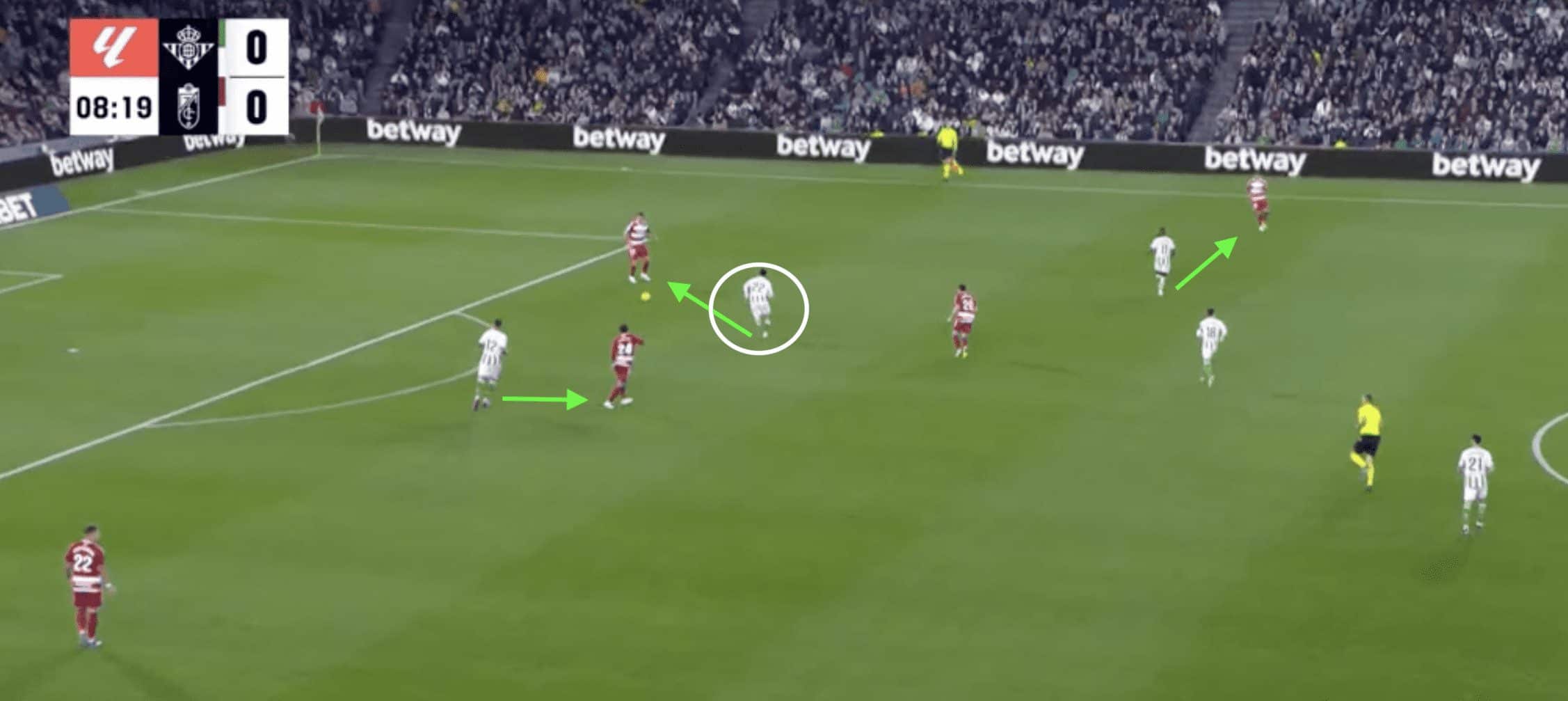
Betis’ efforts can appear to be passive at times, having achieved 12.9 PPDA (passes per defensive action), currently the 6th highest score in LaLiga. It would appear that should the initial stage of press be bypassed, Betis look to instigate a compact and well-disciplined mid-block, with focus upon delaying the opponent and minimising easy opportunities to advance.
Defensive duties
With this in mind, Isco still needs to let the speed of the game pass him by, with critical defensive effort and contribution negating opposition counterattacks and facilitating the ability to transition themselves. Along with his role pressing as a second striker, we have observed Isco shifting wider at times, occupying the role of a left midfielder in an attempt to cut out passing options to recycle the ball, forcing opponents to play into the stout defensive line. Despite lacking the pace and physicality of his former years, Isco has been proactive when defending in transition, displaying an intent to track down the opponent and recover the ball. This lease of life starts to question the perceived notion that bouts of laziness began to creep into his game in his final Madrid years.
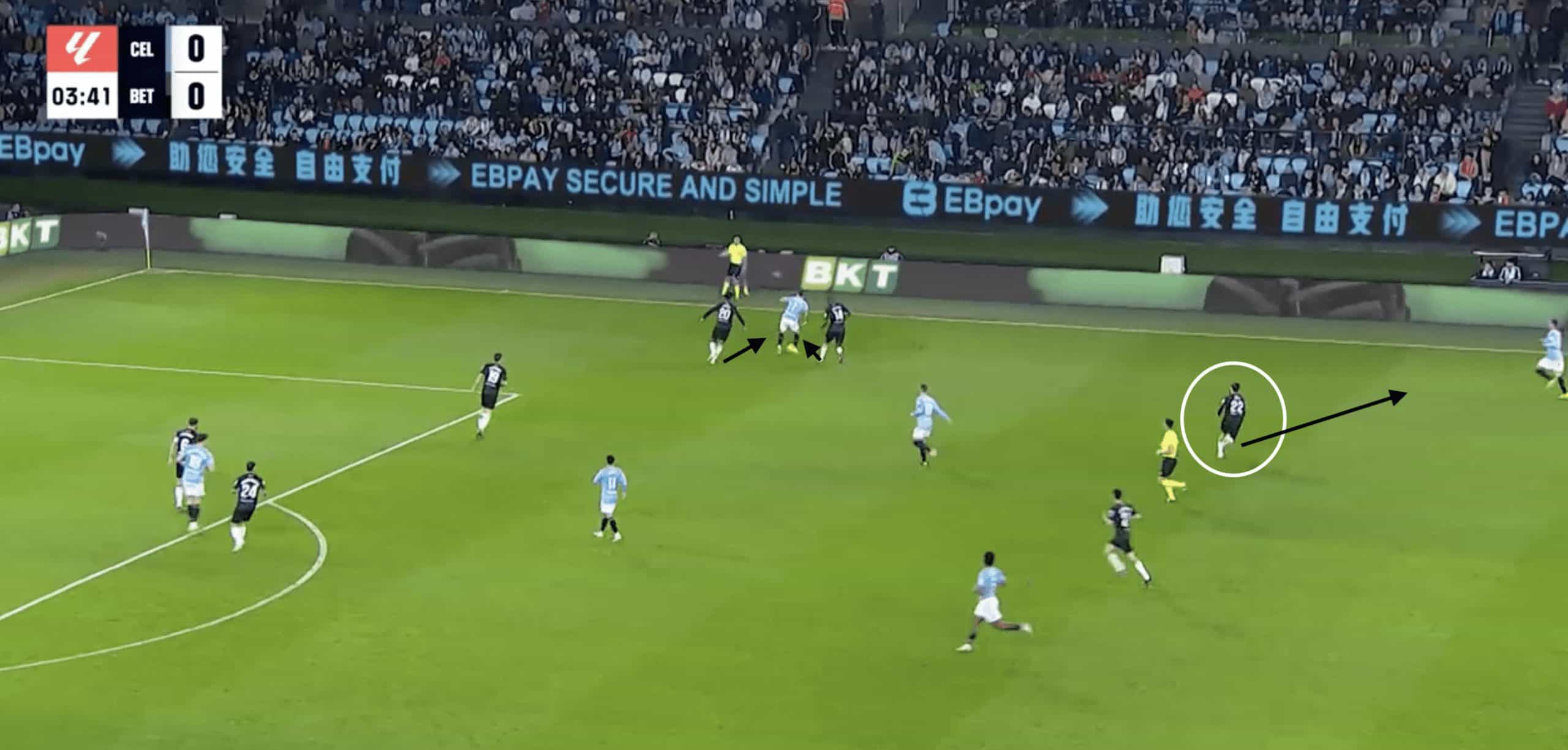
However, for all his efforts we can still see elements to his defensive game which would appear to be deficient. Even though he brings electricity and life to the attacking phase, his physical capabilities can often be stretched when attempting to defend. We can observe a lack of discipline when defending the central areas, with 1.25 fouls committed per game being relatively poor. The desperation to counter-press when dispossessed has led to several cautions and leaves him vulnerable when defending for the rest of the match.
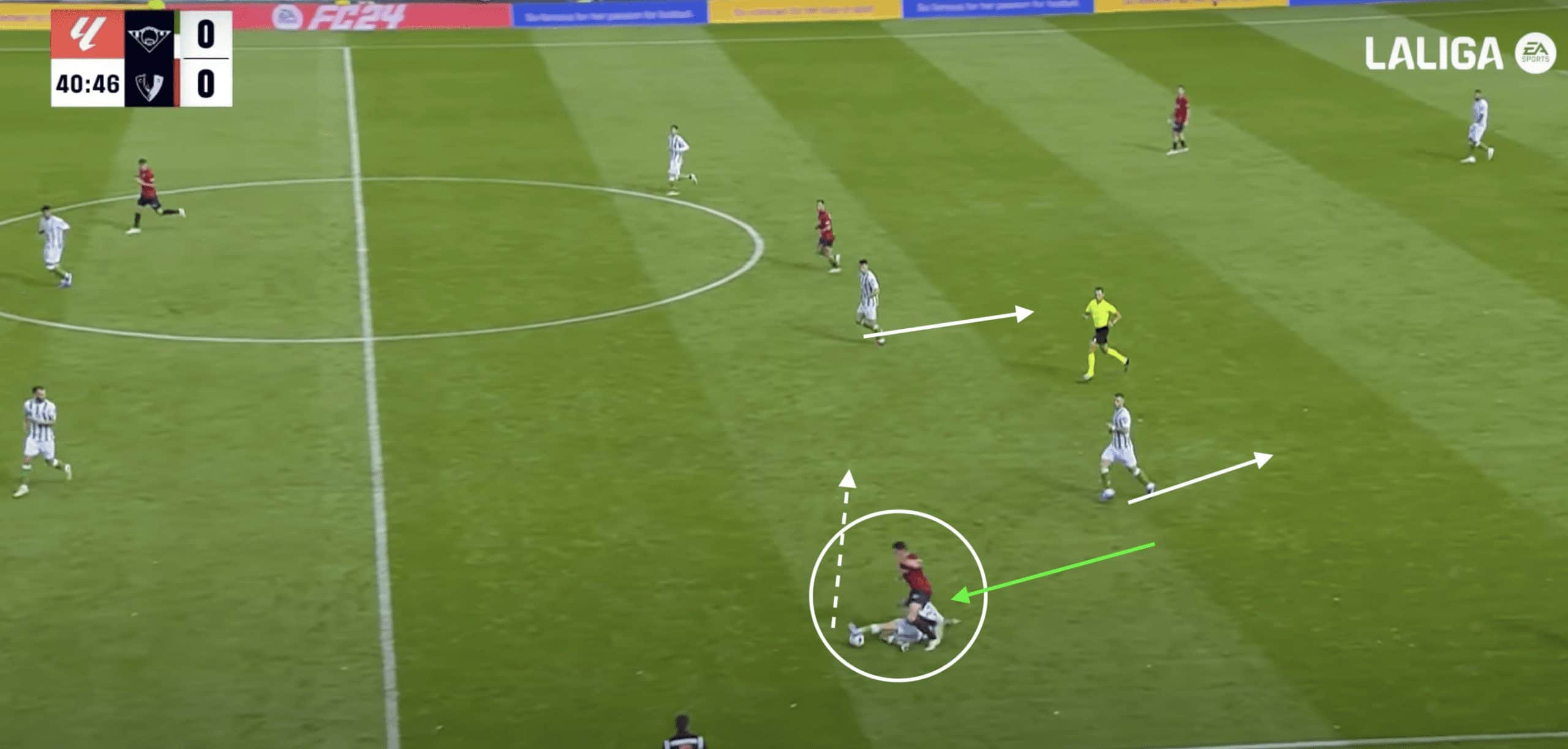
Conclusion
Having found a home under Pellegrini, Isco has already made exceptional strides in getting his career back on track. Whilst he has always been considered as a tremendous talent, he has progressed well in dispelling public opinion regarding his levels of passion and commitment. With his future at Betis solidified until 2026, fans of Los Verdiblancos will hope that he can remain a crucial figure and leader within the dressing room for years to come.





Comments